Batting average .278 Role Baseball player Name Ray Chapman | Runs batted in 364 Home runs 17 Weight 77 kg | |
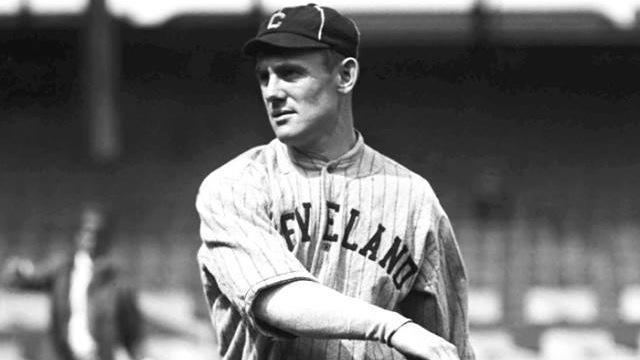 | ||
Died August 17, 1920, New York City, New York, United States | ||
Ray chapman 1920 cleveland indians shortstop on foox 30
Raymond Johnson "Ray" Chapman (January 15, 1891 – August 17, 1920) was an American baseball player, spending his entire career as a shortstop for the Cleveland Indians.
Contents
- Ray chapman 1920 cleveland indians shortstop on foox 30
- Indians player killed still remembered
- Career
- Death
- Honors
- References
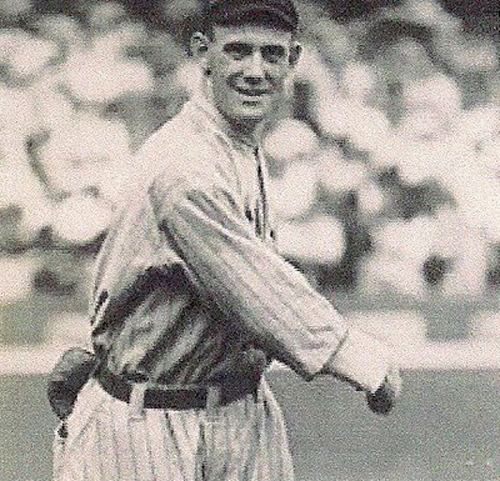
Chapman was hit in the head by a pitch thrown by Yankees pitcher Carl Mays, and died 12 hours later. He remains the only Major League Baseball player to have died from an injury received during an MLB game. His death led to Major League Baseball establishing a rule requiring umpires to replace the ball whenever it became dirty, and it was partially the reason the spitball was banned after the 1920 season. Chapman's death was also one of the examples used to emphasize the need for wearing batting helmets (although the rule was not adopted until over 30 years later).
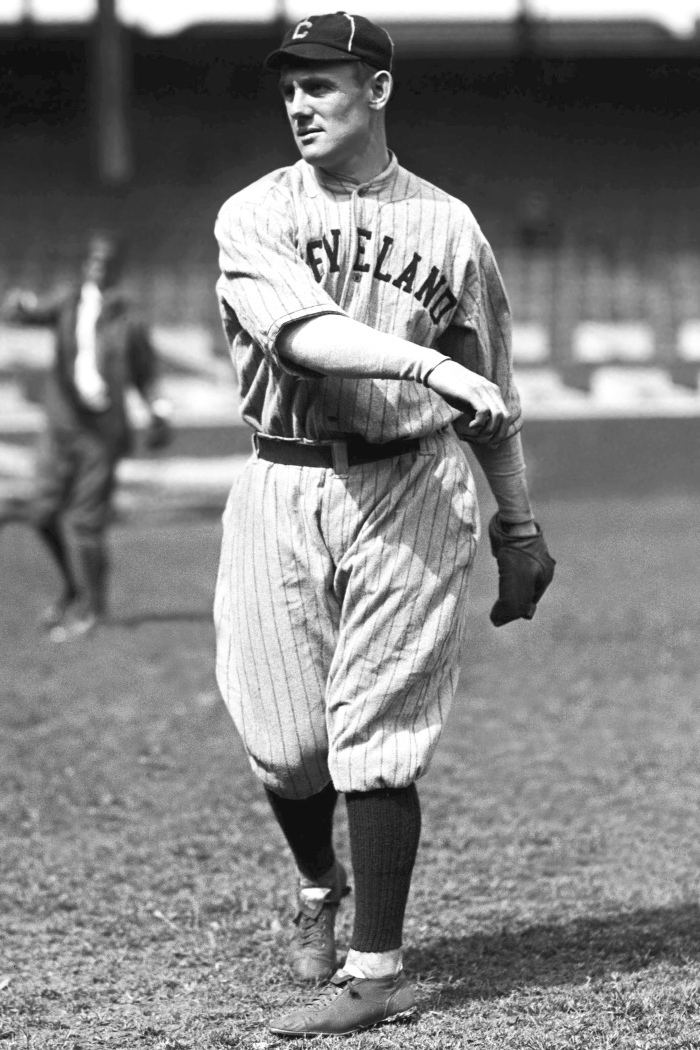
Indians player killed, still remembered
Career

Chapman was born in Beaver Dam, Kentucky, and raised in Herrin, Illinois. He broke into the Major Leagues in 1912 with the Cleveland team, then known as the Naps.
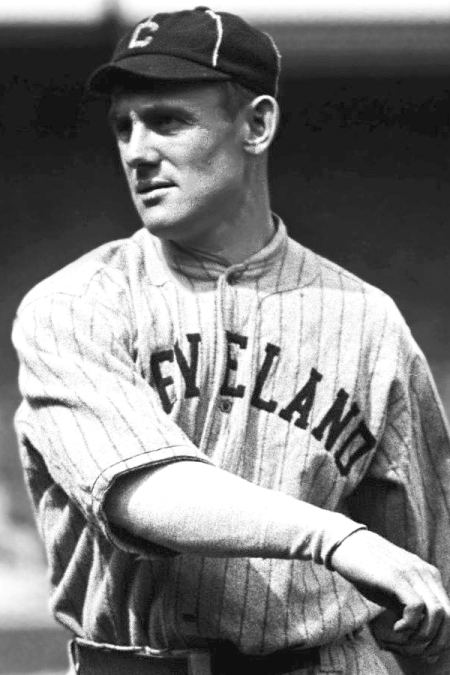
Chapman led the American League in runs scored and walks in 1918. A top-notch bunter, Chapman is sixth on the all-time list for sacrifice hits and holds the single season record with 67 in 1917. Only Stuffy McInnis has more career sacrifices as a right-handed batter. Chapman was also an excellent shortstop who led the league in putouts three times and assists once. He batted .300 three times, and led the Indians in stolen bases four times. In 1917, he set a team record of 52 stolen bases, which stood until 1980. He was hitting .303 with 97 runs scored when he died. He was one of the few players whom Ty Cobb considered a friend.
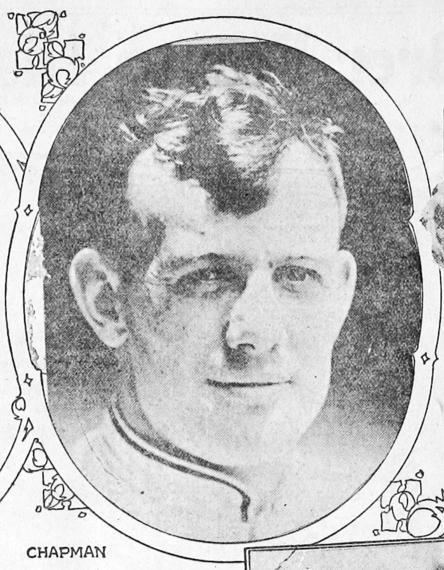
There was conjecture that 1920 was going to be Chapman's last year as a pro baseball player. Shortly before the season began, Chapman married Kathleen Daly, who was the daughter of a prominent Cleveland businessman. Chapman had indicated he was going to retire to devote himself to the family business into which he was marrying, as well as to begin a family.
Death
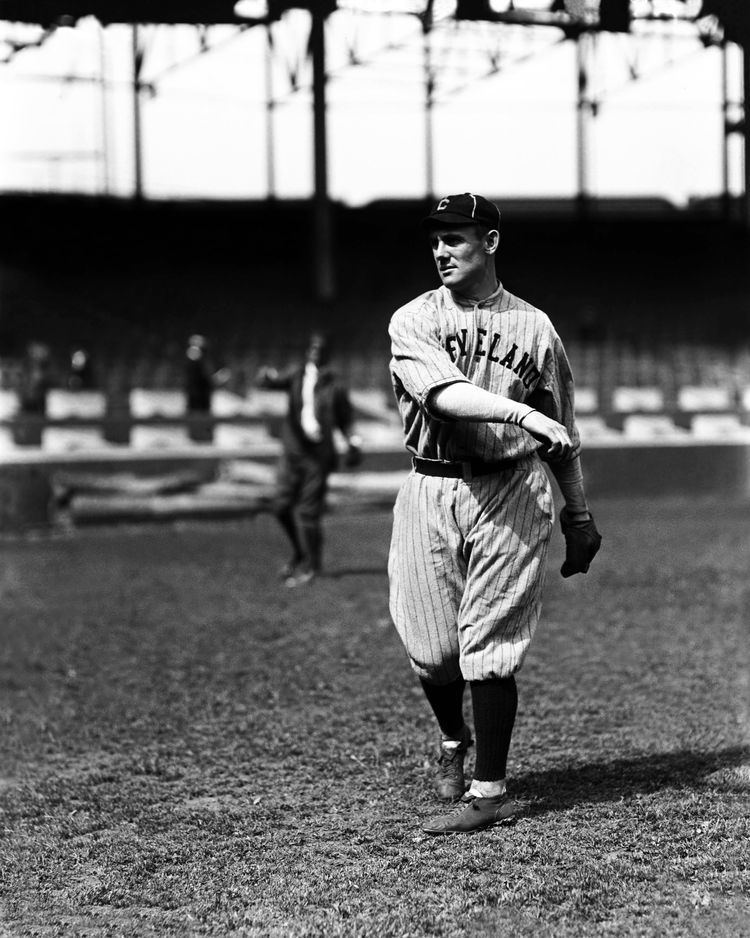
At the time of Chapman's death, part of every pitcher's job was to dirty up a new ball the moment it was thrown onto the field. By turns, they smeared it with dirt, licorice, and tobacco juice; it was deliberately scuffed, sandpapered, scarred, cut, even spiked. The result was a misshapen, earth-colored ball that traveled through the air erratically, tended to soften in the later innings, and, as it came over the plate, was very hard to see.
This practice is believed to have contributed to Chapman's death. He was struck with a pitch by Carl Mays on August 16, 1920, in a game against the New York Yankees at the Polo Grounds. Mays threw with a submarine delivery, and it was the top of the fifth inning, in the late afternoon. Eyewitnesses recounted that Chapman never moved out of the way of the pitch, presumably unable to see the ball. "Chapman didn't react at all," said Rod Nelson of the Society of American Baseball Research. "It was at twilight and it froze him." The sound of the ball smashing into Chapman's skull was so loud that Mays thought it had hit the end of Chapman's bat, so he fielded the ball and threw to first base.
Mike Sowell, in his book The Pitch That Killed, states that first baseman Wally Pipp caught Mays' throw to first and then realized something was very wrong. Chapman never took any steps, but rather slowly collapsed to his knees and then to the ground with blood pouring out of his left ear. The umpire quickly called for doctors in the stands to come to Chapman's aid. Eventually Chapman was able to stand and to try to walk off the field, but mumbled when he attempted to speak. As he was walking off the field, his knees buckled and he had to be assisted the rest of the way. He was replaced by Harry Lunte for the rest of the game, which the Indians won 4-3. Chapman died 12 hours later in a New York City hospital, at about 4:30 a.m.
Thousands of mourners were present for Chapman's funeral at the Cathedral of St. John the Evangelist in Cleveland. In tribute to Chapman's memory, Cleveland players wore black armbands, with manager Tris Speaker leading the team to win both the pennant and the first World Series championship in the history of the club. Rookie Joe Sewell took Chapman's place at shortstop, and went on to have a Hall of Fame career (which he coincidentally concluded with the Yankees).
Ray Chapman is buried at Lake View Cemetery in Cleveland, Ohio, not far from where his new home was being built on Alvason Road in East Cleveland. He and his wife had visited the home as it was being built several hours before he departed for New York on his final road trip.
Honors
Not long after Chapman died, a bronze plaque was designed in his honor, funded by donations from fans. The plaque features Chapman's bust framed by a baseball diamond and flanked by two bats, one of which is draped with a fielder's mitt. At the bottom of the tablet is the inscription, "He lives in the hearts of all who knew him". The plaque was dedicated and hung at League Park and was moved to Cleveland Stadium in 1946 when the Indians moved to that stadium. Sometime in the early 1970s, however, it was taken down for unknown reasons.
The plaque was rediscovered while the Indians were moving from Cleveland Stadium to Progressive Field, known then as Jacobs Field, after the 1993 season. Jim Folk, the Indians' vice president of ballpark operations, said, "It was in a store room under an escalator in a little nook and cranny. We didn't know what we were going to do with it, but there was no way it was just going to stay there when we moved to Jacobs Field. We had it crated up and put on a moving truck and it came over along with our file cabinets and all the other stuff that came out of the stadium." After the move, it was lost and forgotten once again. "It just kind of got forgotten about, to be honest," Folk said.
In February 2007, workers discovered the plaque while cleaning out a storage room at Progressive Field. Covered by thirteen years of dust and dirt, the bronze surface had oxidized a dark brown and the text was illegible. The plaque was refurbished and made part of Heritage Park at Progressive Field, an area that opened soon after in April 2007 and includes the Cleveland Indians Hall of Fame and other exhibits from the team's history. Chapman had previously been inducted into the team hall of fame in July 2006, part of the first new induction class since 1972.
